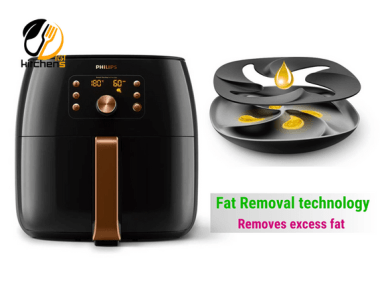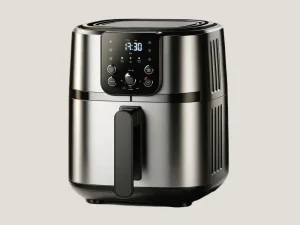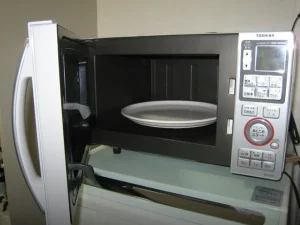If you want to speed up your kitchen routine, the microwave is your best friend. But not everything is fit for the microwave’s magic. The topic of microwave stainless steel and metal dishes creates considerable confusion.
So, can you microwave stainless steel? The short answer is no. Microwaving stainless steel isn’t safe but microwaving glass is safe. Stainless steel tends to bounce microwaves around instead of letting them penetrate the food, leading to alarming sparks and even a fire risk.
But the dangers don’t stop there. Using stainless steel in your microwave could risk a kitchen mishap and mess with your food’s flavor and texture. Worse still, it could char your meal beyond recognition.
Before popping that stainless steel container in, let’s dive into why it’s risky and what safety tips you should follow. This casual chat will clear up all your queries about stainless steel and microwaves, keeping your meals safe and delicious.
What is Microwaving?

Microwaves are electromagnetic radiation, like radio waves or visible light, but with a shorter wavelength. It ranges from one meter to one millimeter, or equivalently, with frequencies between 300 MHz (0.3 GHz) and 300 GHz.
The microwaves cause molecules to vibrate millions of times per second, producing heat through friction, which cooks the food.
Microwaves are widely used in various technologies, including microwave ovens, common in kitchens worldwide.
It briefly explains how microwaves work and the difference between microwave-safe and non-microwave-safe materials.
How does Microwaves Work?
Microwaves heat food using electromagnetic radiation, but not the scary kind! Unlike traditional ovens that heat food from the outside, microwaves directly heat the water molecules inside food.
Here’s how it works:
- Generation of Microwaves: The microwave process uses a magnetron electron tube to generate microwaves. These microwaves cause molecules to vibrate millions of times per second, creating heat through friction, which cooks the food.
- Microwave Radiation: When you start cooking, the magnetron sends radiation into the cooking area. These radiations are good at making water molecules in your food vibrate. This vibration creates heat, which cooks the food.
- Heating Process: Microwaves make water molecules in food vibrate fast. This vibration creates heat, warming the food.
Think of it like this: the microwave makes the water molecules in your food dance, and their movement turns into heat. It’s fast and efficient, making microwaves a favorite for quick cooking.
Microwave-Safe vs. Non-Microwave-Safe Materials
Microwave-Safe Materials:
- Glass: Most glassware is microwave-safe if it does not have metal rims or decorations.
- Ceramics: Only use ceramics that are unglazed or certified for microwave use. This avoids reactions with metals in the glaze.
- Some Plastics: Plastics labeled “microwave safe” are tested to ensure they can withstand microwaves without melting or releasing harmful chemicals. These plastics resist heating up, letting the microwaves pass through to heat the food.
Non-Microwave-Safe Materials:
- Metal: Metal reflects microwaves, which can cause sparks and potentially damage the microwave or start a fire. This includes aluminum foil and metal trim on dishes or cups.
- Some Plastics: Plastics not labeled as microwave-safe can melt and potentially leach chemicals into food when heated. These include disposable containers not intended for heating, like margarine tubs or take-out containers.
- Styrofoam: While some styrofoam is microwave-safe, most are not, as they can melt or release toxic chemicals into food when heated.
Always look for the microwave-safe label on containers and follow the manufacturer’s guidelines for their use.
What is Stainless Steel?
Stainless steel is a durable and shiny metal that mixes iron with other elements like chromium, nickel, and carbon. This mix makes it strong and resistant to rust and staining, which is why it’s so popular.
In the kitchen, stainless steel is everywhere. It’s used for pots, pans, utensils, and appliances because it’s durable, easy to clean, and doesn’t react with foods.
Outside the kitchen, it’s also found in everyday items like watches, jewelry, and even some parts of buildings for the same reasons.
Now, when it comes to popping stainless steel in the microwave, here’s the deal: It’s not a good idea. So, to be safe, it’s best to keep any metal, including stainless steel, out of your microwave.
Remember, microwaving your food in microwave-safe containers is the way to go, and save stainless steel to keep your kitchen beautiful and durable against wear.
Can You Microwave Stainless Steel? The Detailed Answer

Can you microwave stainless steel? The short answer is no. It’s not a good idea. Putting stainless steel in the microwave is a no-go. It’s like asking for a mini light show inside your microwave, not in a good way.
Microwaves and stainless steel don’t mix. When you put stainless steel in the microwave, it blocks the waves from warming your food. Instead, those waves bounce around and can cause sparks. Not exactly what you want to happen.
So, can you put stainless steel in the microwave safely? The straight answer is no.
However, not all hope is lost if you need to use stainless steel in the kitchen. While stainless steel microwave interiors are made to withstand microwaves, placing stainless steel objects inside is a different story.
Always check if a container is microwave-safe. Some microwave stainless steel bowls or cups are labeled safe, but exceptions are not the rule.
For safe microwaving, use glass or microwave-safe plastic. Remember, safety comes first! Don’t try to test if stainless steel can defy the odds in your microwave.
Why You Shouldn’t Microwave Stainless Steel?
Microwaving stainless steel? Not a good idea. Let’s clear that up. Here’s why you shouldn’t microwave stainless steel.
First off, microwaves and metal don’t mix. Microwaves can’t pass through metal so the food won’t cook properly. Also, stainless steel in the microwave can cause sparks.
These sparks happen because microwaves bounce off the stainless steel, causing electric arcs. Not only is this bad for your microwave’s health (think damage over time), but it’s also a safety hazard. You could end up with a fire on your hands if things get out of control.
Stainless steel in the microwave blocks the heat. Your food stays cold while your microwave takes a beating. It makes the whole “quick and hot meal” thing pointless.
Plus, microwaving stainless steel can ruin your food’s taste and safety. The food might not cook evenly, leaving cold spots that bacteria love.
So, keep your microwave safe and your meals hot by steering clear of stainless steel inside it. Stick to microwave-safe dishes to avoid any kitchen mishaps.
Expert Advice and Safety Tips
Appliance experts and scientists stress the importance of using microwaves safely to avoid damage to the appliance and ensure user safety. They recommend:
- Monitoring Usage: Avoid running the microwave empty, as it can damage the magnetron.
- Maintenance: Regularly check the door seal for wear and tear to prevent microwave leakage.
- Understanding Settings: Use the appropriate power settings for different types of food to prevent uneven cooking or overheating.
Do’s and Don’ts
Do’s:
- Use Microwave-Safe Containers: Always use microwave-safe containers. Glass and ceramic are generally safe options.
- Cover Food: Use a microwave-safe cover to prevent splattering and to help food cook evenly.
- Stir and Rotate: For even cooking, stir food halfway through, and if your microwave doesn’t have a rotating plate, manually rotate the container.
- Check for Hot Spots: After heating, carefully check for hot spots in the food to avoid burns.
Don’t:
- Don’t Use Metal or Foil: Metal can spark and cause fires. This includes utensils and containers with metallic trims.
- Avoid Certain Plastics: Not all plastics are microwave-safe. Avoid containers not explicitly labeled as such, as they may melt or leach chemicals.
- Don’t Microwave Whole Eggs or Sealed Containers: They can explode due to pressure build-up.
- Don’t Heat Water Alone: When moved, superheated water can explosively boil, causing burns.
How to Check If Something Is Microwave Safe
- Manufacturer’s Label: The safest way is to look for a label or instructions indicating that the container is microwave-safe.
- The Water Test: If you need clarification on a container, you can perform a simple test. Fill the container you’re testing with water, place it in the microwave alongside a cup of water you know is microwave-safe, and heat for one minute. If the container you’re testing stays cool but the water inside heats up, it’s likely safe for the microwave. If the container heats up, it’s absorbing microwaves and isn’t safe.
- Check for Damage: Before using, inspect containers for cracks, chips, or damage that could make them unsafe in the microwave.
- Consult the Manufacturer: If still in doubt, consult the manufacturer’s instructions or contact their customer service for advice on the microwave safety of their products.
Always exercise caution and consult with the manufacturer or refer to the appliance’s user manual for specific advice when in doubt.
Conclusion
In wrapping up, the answer to “Can you microwave stainless steel?” is a clear no. It’s vital to understand that while microwaves are incredibly convenient, they don’t play well with all materials, and stainless steel cookware is one of them.
We’re all about safe and smart kitchen practices here, so if you’ve ever had a microwave oven mishap or discovered a handy tip, we’d love for you to share it. Your experiences and advice could help others navigate their kitchen adventures more safely.
Please comment below with your thoughts, questions, or tips on safe microwave oven use.
And if you’re looking for more valuable tips on navigating your kitchen safely, consider following or subscribing. Stay informed and safe, and let’s keep our kitchen experiences positive and accident-free!













